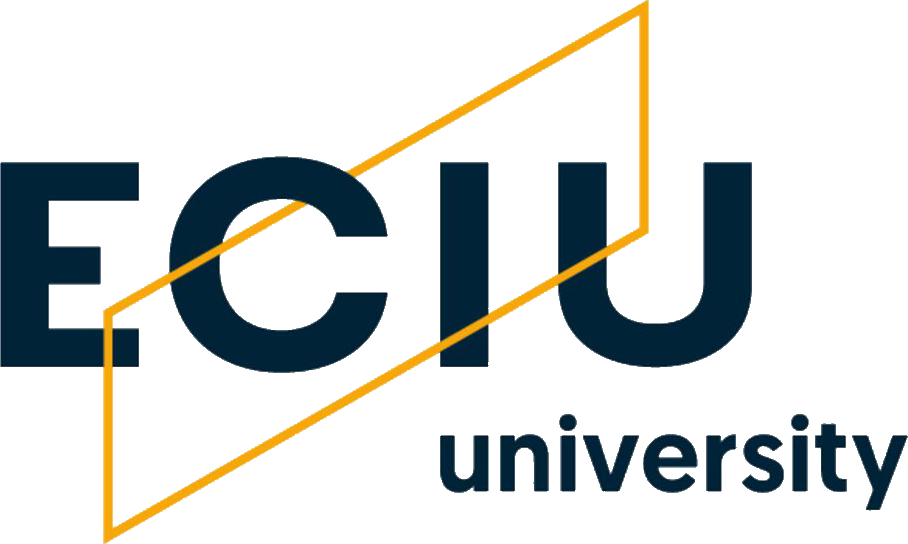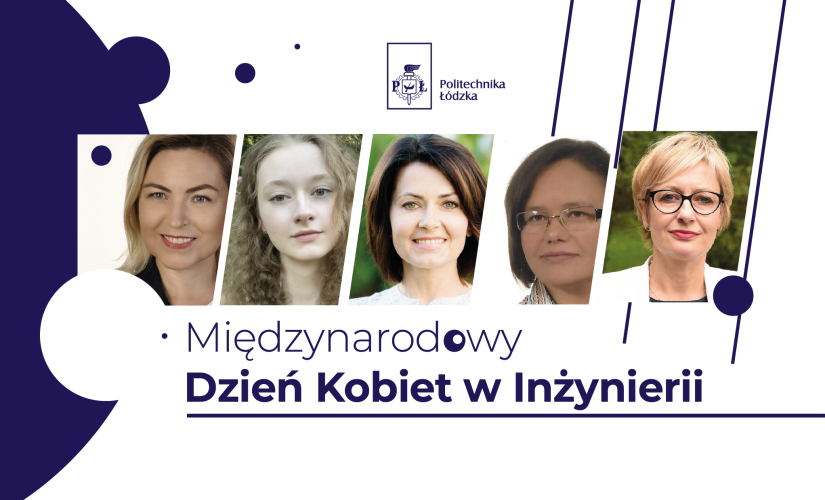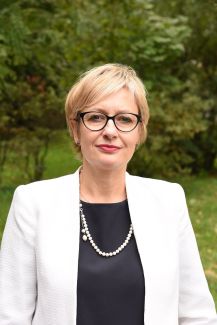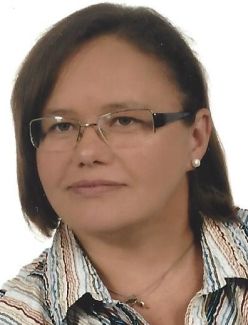At our university, you can find many inspiring examples of female researchers-leaders who have achieved great success in engineering and technical sciences. Research in the area of STEM (Science, Technology, Engineering, Mathematics) gains thanks to the courage of women, their inquisitiveness and commitment to the search for truth. Women scientists, facing difficult technological issues, have a real impact on solving the problems of the modern world. Therefore, I strongly encourage all women to undertake engineering studies and engage in scientific research in this area, using the unique path of their own development that opens up unlimited possibilities.
- says Prof. Łukasz Albrecht, Vice-Rector for Science at TUL.
CO2 expert
Prof. Hanna Kierzkowska-Pawlak, chair of the Discipline Council of Chemical Engineering at Lodz University of Technology, is working on the technology of capturing carbon dioxide using absorption methods and converting CO2 into valuable products, e.g. fuels.
She conducts research at the Faculty of Process and Environmental Engineering. Why did you focus on such a research problem?
The choice of research topics related to the reduction of CO2 emissions is closely related to the current challenges faced by modern chemical engineering, in the context of both energy and environmental problems. Thanks to appropriate research into new catalysts and effective methods of absorbing and further converting CO2, we can use this gas as a valuable source of clean carbon, instead of treating it as a harmful and useless waste, which at the same time can contribute to reducing our dependence on traditional energy sources and raw materials. To produce a new generation of catalysts, we use cold plasma technology, which is an irreplaceable tool for creating unique nanostructures. This is why the search for new, complex nanomaterials and their validation in specific processes is so fascinating. However, the greatest satisfaction brings us a deeper understanding of the essence of the phenomena under study, which enables further improvement of processes, as opposed to the typical "trial and error" approach.
Specific research
“Concrete” The sound of this word has meaningful meaning for Prof. Renata Kotynia, which she values the most. She is a world-renowned expert in the field of polymer composites, which are increasingly used in the construction industry. She works as a researcher at the Faculty of Civil Engineering, Architecture and Environmental Engineering. How does a woman find herself in a construction site?
I am happy to wear a hard hat and appropriate footwear to maintain safety on the construction site. My passion for research and the search for new materials and technologies made me take this subject seriously and developed extensive research on the use of composites for structural reinforcement on an international scale. We significantly extended these studies to include non-metallic reinforcement in concrete structures. I think that two factors contributed to my passion for reinforced concrete: firstly, my science mentors, and secondly, the construction possibilities offered by reinforced concrete.
Printed health
Assoc. Prof. Dorota Bociąg, from the Faculty of Mechanical Engineering specializes in biomedical engineering.
She works on material and construction solutions used in 3D bioprinting and broadly understood tissue engineering. The goal is to create implants that are even better suited to the individual needs of patients and the type of disease. Why did you choose this discipline?
Because materials engineering is everything that surrounds us, and one of its areas is also biomedical engineering. Research activities in this area translate into real help for people. If our daily work can contribute to the fact that people can be saved better, faster and treated more effectively - then I feel great joy and satisfaction from the effects developed, but also motivation to give the best of myself. A doctor can do a lot, but sometimes they can do very little if they do not have the right tools or implants/devices at their disposal.
Noise engineering
We encounter acoustic issues almost everywhere - in material and mechanical research, in urban design, in the design of machinery, equipment and industrial systems, in psychophysiological and social issues, or in the environment and its protection. Mechanical engineering, like acoustics, is really a very diverse field, the foundation of which is both mechanics, energy and heat, as well as mathematics and other engineering sciences, including design and production, both for environmental and social needs, often including medical issues. The versatility of acoustics and mechanical engineering closely connects and integrates them in many areas, hence my choice of this discipline - mechanical engineering.
– says Joanna Kopania Ph.D.from the Faculty of Organization and Management, head of the LabNOISE Laboratory.
Laboratory creativity
Wiktoria Gerlicz is a winner of the 1st edition of the E2Top program for particularly talented students of Lodz University of Technology. In her research, she was looking for an answer to the question of what bacteria can do for the world? She isolated 109 strains of bacteria that have the potential to break down keratin waste (feathers and animal hair).
As a second-year student, I am only at the beginning of my academic path. For over a year, under the supervision of Assoc. Prof. Aneta Białkowska, I conduct research at the Faculty of Biotechnology and Food Sciences aimed at obtaining new microorganisms capable of decomposing keratin. There are many potential applications for this type of microorganisms, e.g., as an alternative, environmentally friendly method of managing keratin waste (feathers, hair, hooves, etc.). Thanks to the tools of biotechnology, we have the opportunity to use naturally occurring processes to meet the needs of various industries. It is definitely an interdisciplinary field of science where you cannot get bored.
Examples of career development of female scientists from Lodz University of Technology are inspiring and uplifting, and the statistics are also optimistic. Almost 7 million women scientists and engineers were in the European Union in 2021 - an increase of nearly 400,000 compared to 2020. Within 10 years, the percentage of women employed in science and engineering increased to over 41% (in 2012 -33 %). Documents such asthe Gender Equality Plan at the Lodz University of Technology in new window(Gender Equality Plan) serve this purpose, being an expression of support for the entire academic community of our university, prepared out of concern for respecting the value of gender equality.
Interview by Agnieszka Garcarek-Sikorska






